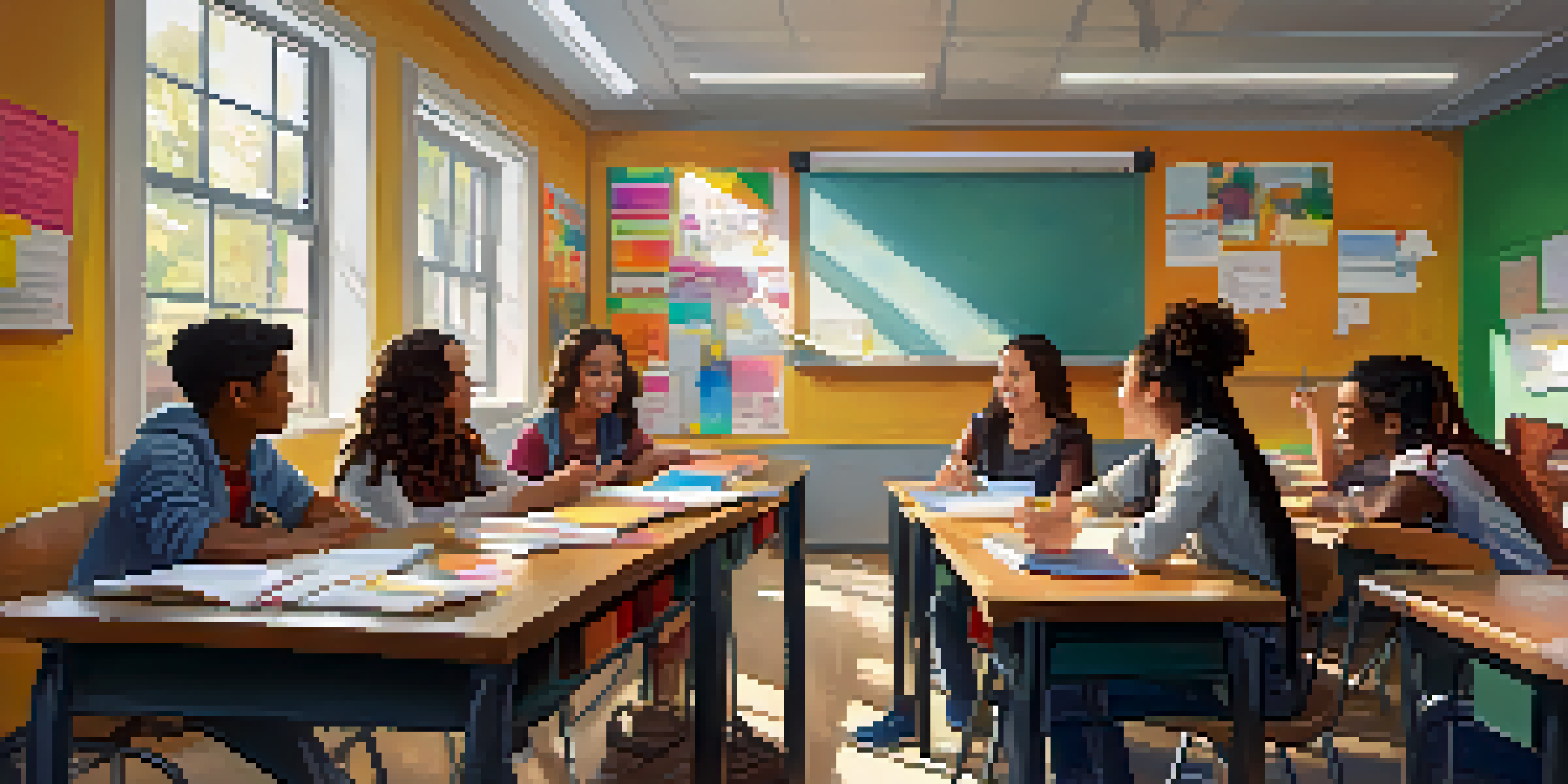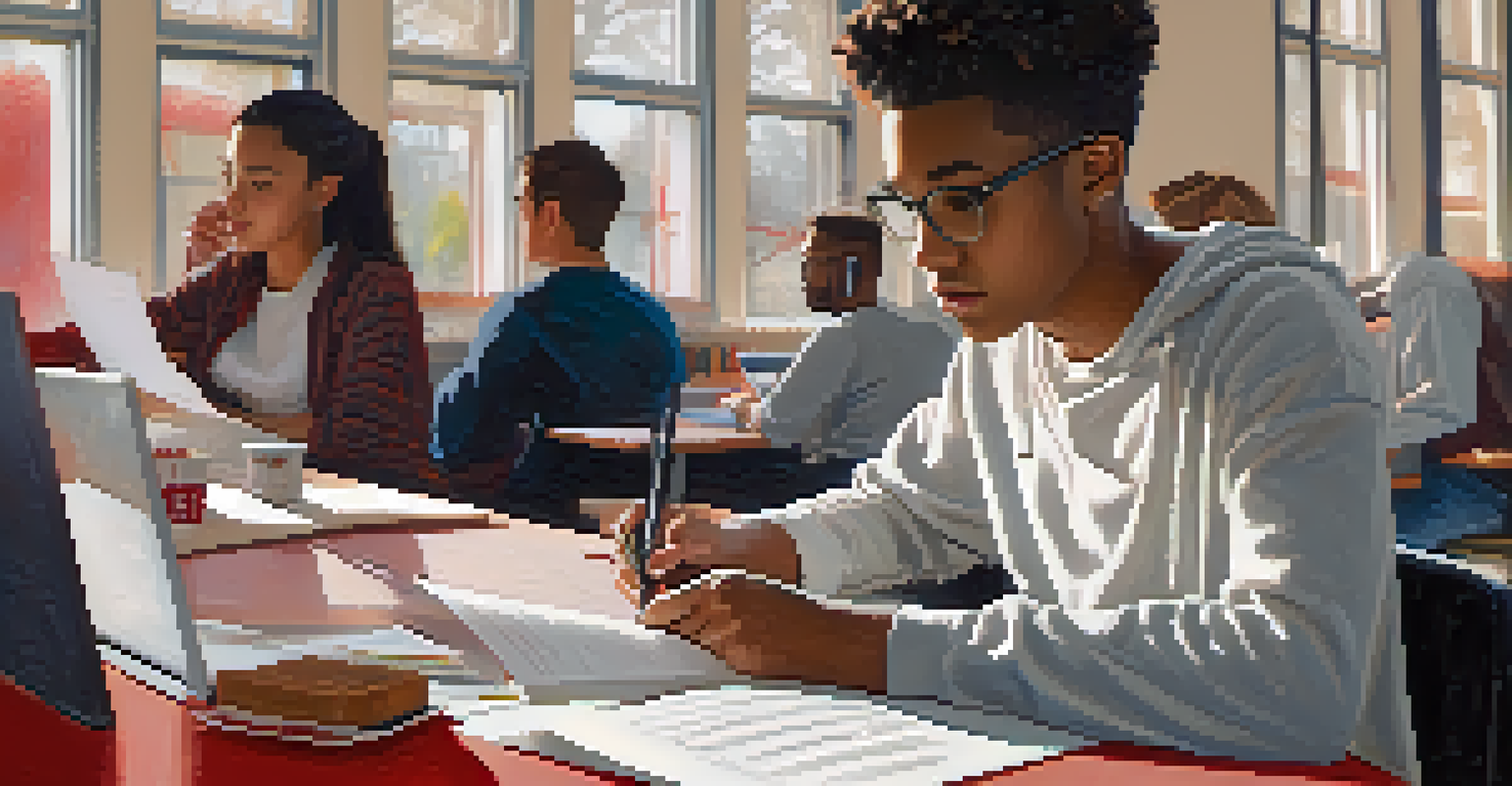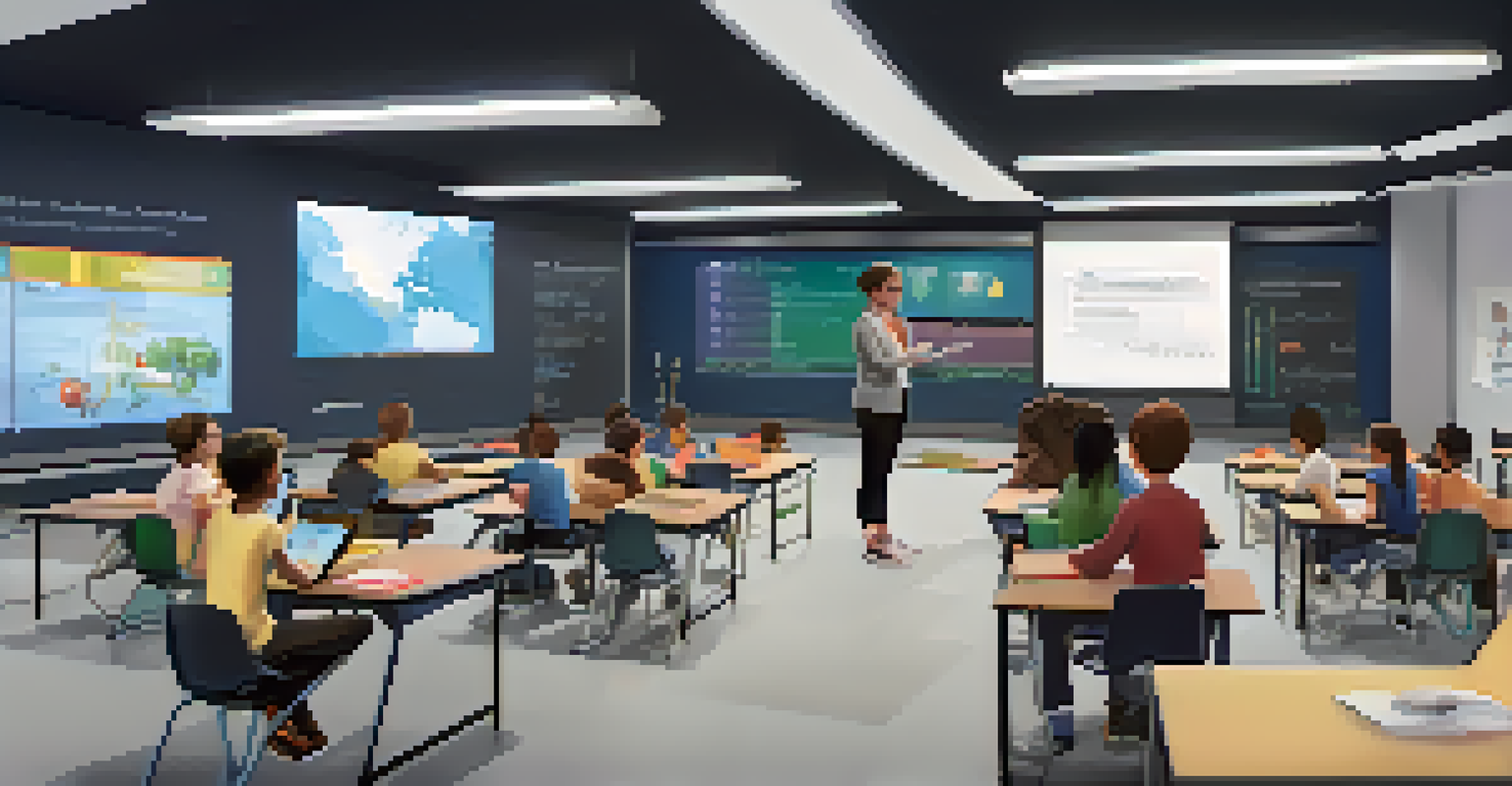The Importance of Feedback in the Learning Process

Feedback: A Key Component of the Learning Journey
Feedback acts like a compass for learners, guiding them toward improvement. It helps individuals identify their strengths and areas that need work. Without feedback, learners may wander aimlessly, unsure of how to progress.
Feedback is the breakfast of champions.
Imagine trying to navigate a maze without directions; feedback provides essential insights that help clarify the path ahead. It transforms the learning process from a solitary endeavor into a collaborative journey, where growth is shared and celebrated.
Ultimately, feedback fosters a growth mindset, encouraging learners to embrace challenges rather than shy away from them. This shift not only enhances their skills but also boosts their confidence in tackling new obstacles.
Types of Feedback: Understanding What Works Best
Feedback can come in various forms, including verbal, written, or even non-verbal cues. Each type serves a distinct purpose and can be more effective in different contexts. For instance, verbal feedback during a discussion can provide immediate clarification and foster a dynamic exchange.

Consider written feedback as a more reflective approach; it allows learners to digest information at their own pace. This type of feedback is particularly beneficial for complex tasks, where detailed observations can guide improvement over time.
Feedback Guides Learning Growth
Feedback acts as a compass, helping learners identify strengths and areas for improvement.
Non-verbal feedback, such as gestures or facial expressions, can also convey important messages. These subtle cues can enhance understanding and indicate when a learner is on the right track, highlighting the multifaceted nature of effective feedback.
The Role of Constructive Feedback in Growth
Constructive feedback is vital for learners, as it focuses on improvement rather than criticism. This type of feedback encourages individuals to view mistakes as opportunities for growth. By framing feedback positively, learners are more likely to engage with it and use it to enhance their skills.
What is the shortest word in the English language that contains the letters: abcdef? Answer: feedback. That’s the breakfast of champions.
Think of constructive feedback as a supportive coach in a sports team. Just like a coach provides specific tips to help athletes improve their game, constructive feedback helps learners refine their skills and strategies.
Providing constructive feedback means being specific and actionable. Instead of merely stating what went wrong, effective feedback outlines clear steps for improvement, making the learning process more effective and rewarding.
The Impact of Timely Feedback on Learning
Timing is everything in the feedback process. Providing feedback promptly after a task allows learners to connect their actions with the insights given. This immediacy helps reinforce learning and makes it easier for individuals to implement changes.
Imagine receiving feedback on a presentation days later; the details may be forgotten, and the opportunity for improvement is lost. Timely feedback ensures that the learning experience remains fresh and relevant.
Constructive Feedback is Essential
Constructive feedback focuses on improvement, encouraging learners to view mistakes as growth opportunities.
Incorporating timely feedback into learning routines creates a cycle of continuous improvement. As learners receive feedback in real-time, they can adjust their approaches and solidify their understanding, leading to better outcomes.
Feedback and the Development of Self-Regulation
Feedback plays a crucial role in fostering self-regulation skills among learners. By reflecting on feedback, individuals can assess their own understanding and make informed decisions about their learning strategies. This self-awareness cultivates a sense of ownership over the learning process.
Consider a student evaluating their performance on a test. By analyzing feedback, they can identify which study methods were effective and which weren’t, allowing them to modify their approach for future assessments.
With strong self-regulation skills, learners become more proactive in seeking out feedback, rather than waiting for it to be given. This shift encourages an active engagement in their educational journey, enhancing their overall learning experience.
Creating a Feedback-Friendly Learning Environment
Establishing a feedback-friendly environment is essential for fostering open communication. This involves creating a culture where learners feel comfortable sharing their thoughts and asking for feedback. When individuals feel safe, they are more likely to embrace the feedback process and grow from it.
Think of a classroom or training session that encourages questions and discussions. Such an atmosphere not only enhances learning but also promotes collaboration among peers, making feedback a shared responsibility.
Timely Feedback Enhances Learning
Providing feedback promptly connects actions to insights, reinforcing learning and encouraging adjustments.
In a feedback-friendly environment, both learners and instructors play active roles. This collaboration enhances the richness of feedback, creating opportunities for deeper insights and more meaningful learning experiences.
The Future of Feedback in Learning
As technology continues to evolve, so does the landscape of feedback in the learning process. Digital tools and platforms are increasingly being used to facilitate real-time feedback, making it easier for learners to access insights immediately. This shift opens up new avenues for personalized learning experiences.
Consider online learning platforms that utilize analytics to provide tailored feedback based on individual performance. Such innovations help educators understand learners' needs better and adjust their teaching strategies accordingly.

The future of feedback will likely involve a blend of traditional and technological approaches, enhancing the overall effectiveness of the learning experience. By embracing these changes, learners and educators can work together to create a more dynamic and responsive educational environment.